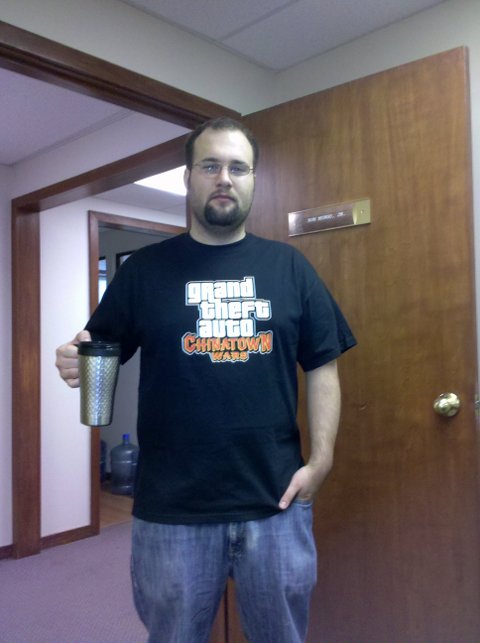Module Module1
Dim rand As Random
Dim tableResults() As List(Of String)
Dim theWheel() As String = {"G00", "B2", "R14", "B35", "R23", _
"B4", "R16", "B33", "R21", "B6", _
"R18", "B31", "R19", "B8", "R12", _
"B29", "R25", "B10", "R27", _
"G0", "R1", "B13", "R36", "B24", _
"R3", "B15", "R34", "B22", "R5", _
"B17", "R32", "B20", "R7", "B11", _
"R30", "B26", "R9", "B28"}
Dim wheelCount As Integer
Dim tableBetAmount() As Integer
Dim tableBetColor() As String
Dim tableLostLastTime() As String
Dim tables, stake, bet, matches, goal, attempts As Integer
Dim cancelBetAfterAWin As String
Function GetASpin() As String
Return theWheel(rand.Next(0, wheelCount))
End Function
Function GetABet(Optional ByVal bigBet As Boolean = False) As Integer
Dim theBet As Integer
If bigBet Then
theBet = bet * 1.5
Else
theBet = bet
End If
If theBet > stake Then theBet = stake
stake = stake - theBet
Return theBet
End Function
Sub Main()
Dim i, j As Integer
Dim s As String
rand = New Random
Console.WriteLine("The Perch")
Console.Write("How many tables to watch? (4) ")
tables = Val(Console.ReadLine)
If tables = 0 Then tables = 4
ReDim tableResults(tables)
ReDim tableBetAmount(tables)
ReDim tableBetColor(tables)
ReDim tableLostLastTime(tables)
Dim stakeSave As Integer
Console.Write("How many money to start with? (10) ")
stakeSave = Val(Console.ReadLine)
If stakeSave = 0 Then stakeSave = 10
Console.Write("How many money to bet? (10) ")
bet = Val(Console.ReadLine)
If bet = 0 Then bet = 10
Console.Write("How many times to hit a color before betting? (4) ")
matches = Val(Console.ReadLine)
If matches = 0 Then matches = 4
Console.Write("What is your goal amount? (400) ")
goal = Val(Console.ReadLine)
If goal = 0 Then goal = 400
Console.Write("How many times to run the simulation? (1000) ")
attempts = Val(Console.ReadLine)
If attempts = 0 Then attempts = 1000
Console.Write("Cancel your bet after a win? (Y) ")
s = Console.ReadLine.ToUpper.Trim
If s = "" Then s = "Y"
cancelBetAfterAWin = (s = "Y")
Dim madeGoal As Integer = 0
wheelCount = theWheel.Count
Dim currAttempt As Integer
Dim ctr As Integer
Dim theSpin As String
Dim spinsSeen As Integer
Dim result As String
For currAttempt = 1 To attempts
' initialize the table arrays
stake = stakeSave
For i = 0 To tables - 1
tableResults(i) = New List(Of String)
tableBetAmount(i) = 0
tableLostLastTime(i) = ""
Next
' initialize the lists
For j = 1 To matches
s = String.Format("{0,5}", j.ToString)
For i = 0 To tables - 1
theSpin = GetASpin()
tableResults(i).Add(theSpin)
s = s + String.Format("{0,5}{1,-5}", "", theSpin)
Next
s = s + String.Format("{0,5}", stake.ToString)
Console.WriteLine(s)
Next
spinsSeen = matches
' loop
While (stake > 0 And stake < goal)
' place your bets
For i = 0 To tables - 1
If tableLostLastTime(i) <> "" Then
' see if this is the 1st time losing
If tableBetAmount(i) = bet Then
' we lost last time out, automatically bet 1.5x
tableBetAmount(i) = GetABet(True)
tableBetColor(i) = tableLostLastTime(i)
Else
' this is the 2nd time losing in a row, so stop betting
tableBetAmount(i) = 0
tableBetColor(i) = ""
tableLostLastTime(i) = ""
End If
Else
' check to see if the colors match up
ctr = 0
For Each r In tableResults(i)
If Left(r, 1) = "B" Then ctr = ctr + 1
Next
If ctr = matches Then
' it's coming up black, bet on red
tableBetAmount(i) = GetABet()
tableBetColor(i) = "R"
tableLostLastTime(i) = ""
End If
ctr = 0
For Each r In tableResults(i)
If Left(r, 1) = "R" Then ctr = ctr + 1
Next
If ctr = matches Then
' it's coming up red, bet on black
tableBetAmount(i) = GetABet()
tableBetColor(i) = "B"
tableLostLastTime(i) = ""
End If
End If
Next
' now spin for each of the tables
spinsSeen = spinsSeen + 1
s = String.Format("{0,5}", spinsSeen.ToString)
For i = 0 To tables - 1
' pop off the oldest spin for each table
tableResults(i).RemoveAt(0)
' get a new spin for each table
theSpin = GetASpin()
tableResults(i).Add(theSpin)
If tableBetAmount(i) = 0 Then
s = s + String.Format("{0,5}{1,-5}", "", theSpin)
Else
s = s + String.Format("{0,5}{1,-5}", _
tableBetAmount(i).ToString + _
tableBetColor(i) + ">", theSpin)
End If
' check for bets
If tableBetColor(i) <> "" Then
If Left(tableBetColor(i), 1) = Left(theSpin, 1) Then
' winner
stake = stake + tableBetAmount(i) * 2
tableLostLastTime(i) = ""
If cancelBetAfterAWin Then
tableBetAmount(i) = 0
tableBetColor(i) = ""
End If
Else
tableLostLastTime(i) = tableBetColor(i)
End If
End If
Next
s = s + String.Format("{0,5}", stake.ToString)
Console.WriteLine(s)
End While
If stake = 0 Then
result = "Busted"
Else
madeGoal = madeGoal + 1
result = "Won $" + stake.ToString
End If
Console.WriteLine("Spins seen: " + spinsSeen.ToString + _
"; Result: " + result)
Next
Console.WriteLine()
Console.WriteLine("Total simulations: " + attempts.ToString)
Console.WriteLine("Number of times goal was made: " + madeGoal.ToString)
Console.WriteLine()
Console.WriteLine("Strike any key to end the program")
Console.ReadKey()
End Sub
End Module |
